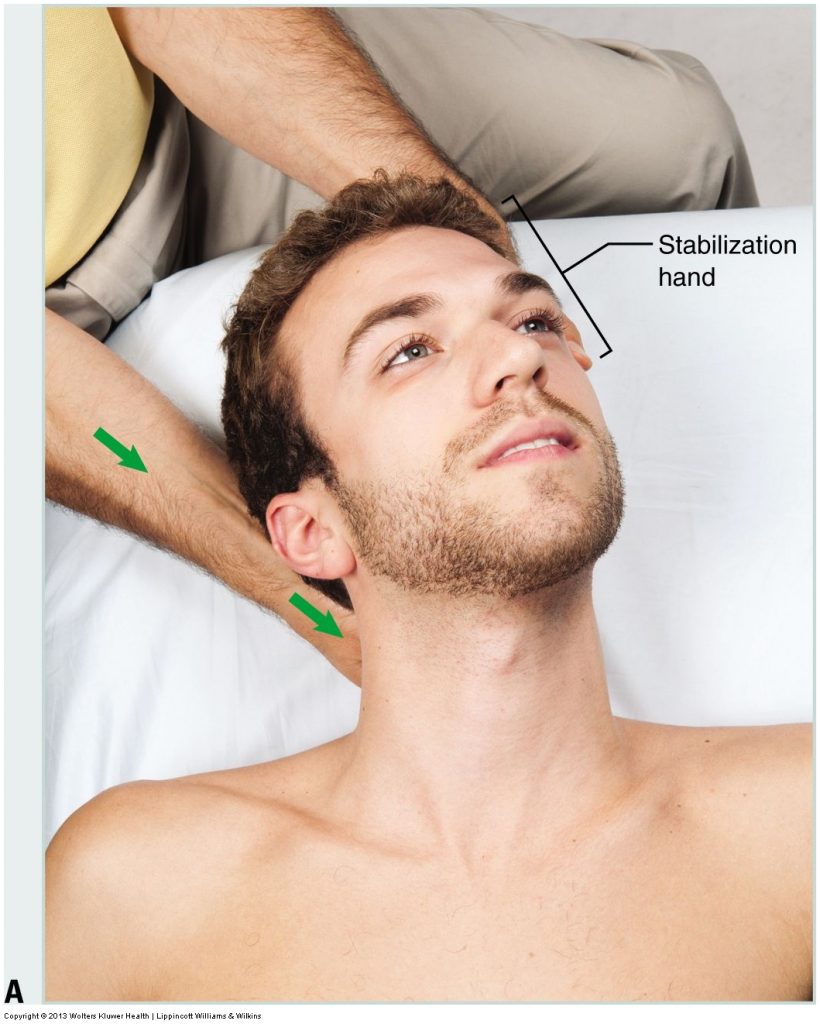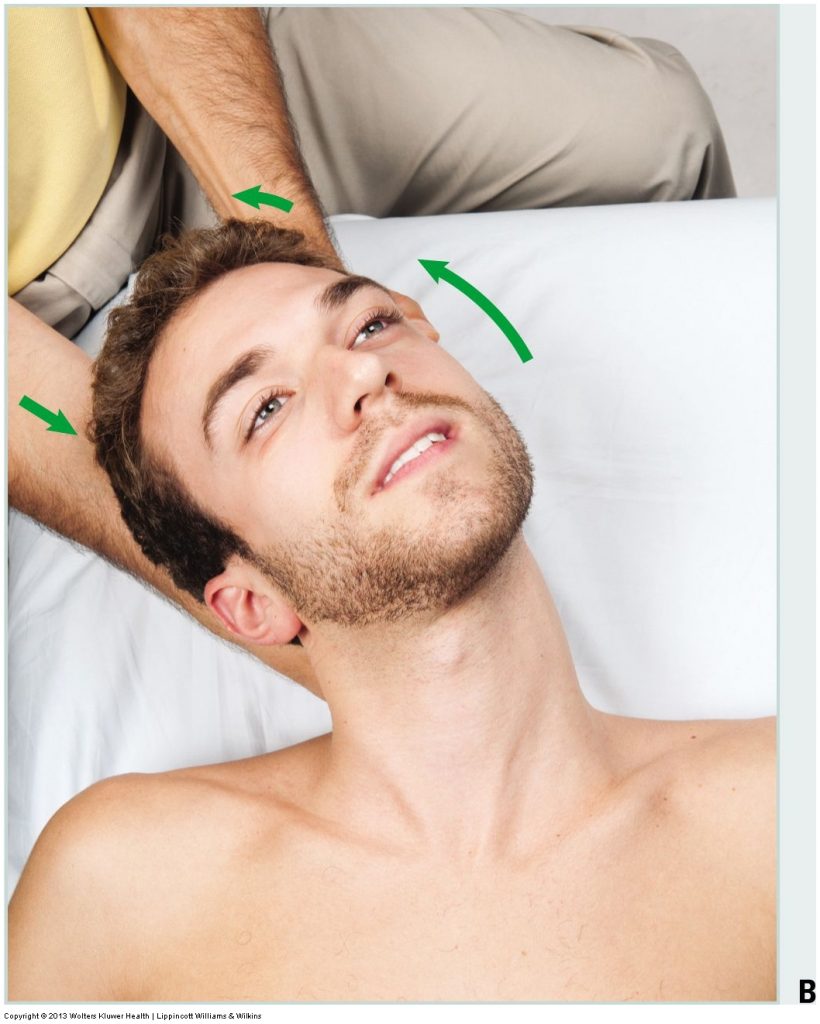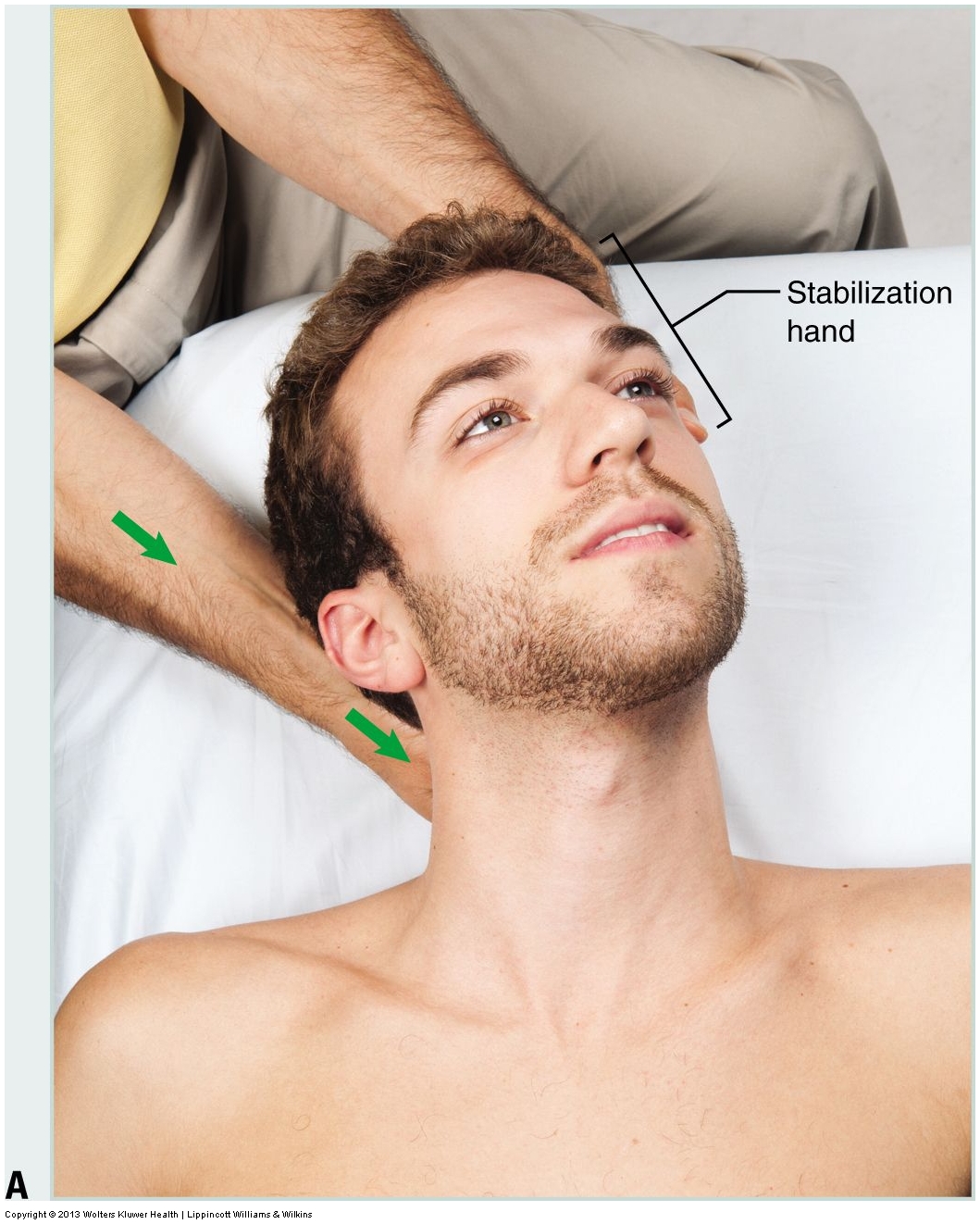This blog post article is the eighth in a series of ten articles on Deep Pressure Massage of the Neck
Using Both Hands as Treatment Hands

Permission Joseph E. Muscolino. Advanced Treatment Techniques for the Manual Therapist: Neck (2013).

Permission Joseph E. Muscolino. Advanced Treatment Techniques for the Manual Therapist: Neck (2013).
When performing deep pressure massage to the neck, using both hands as “treatment hands” is essential. The role of the stabilization hand is to remain still and keep the head and neck from moving as your treatment hand applies pressure into the client’s neck. However, it is possible for the stabilization hand to actually add to the pressure of the stroke by moving the client’s head and neck into the treatment hand of the therapist as the treatment hand is pressing into the client’s tissues (see accompanying figure). In this manner, the treatment hand and stabilization hand can work and move in concert with each other, increasing the force and efficiency of the work. Interestingly, as the stabilization hand is recruited to move the client’s head and neck into your treatment contact, the deep tissue work stroke begins to resemble a joint mobilization technique of the neck (addressed in other blog post articles).
The stabilization hand can be used to add to the depth of pressure for deep pressure massage. (A) The stabilization hand stays fixed to stabilize the client’s neck above the point of treatment hand contact. (B) The stabilization hand left laterally flexes the client’s neck, bringing it into the treatment hand contact, thereby adding to the depth of pressure. As a general rule, using the stabilization hand as a treatment hand to increase the depth of pressure is more efficient as we work higher into the client’s neck
Engage the Tissues
Deep pressure massage requires that you engage the client’s tissues. This means that you need to press in until you feel resistance to your pressure. Once resistance is felt, further pressure then needs to be applied for deep tissue work to be done. It is important to stay within your client’s tolerance and to sink in and increase your pressure slowly. For deep tissue work to be successful, however, it is often necessary to apply sufficient force for your pressure to translate to the deep tissue layers.
Note: Being able to feel tissue tension barriers is probably the one most crucial aspect of being a successful clinical orthopedic manual therapist. From a mechanical standpoint, it is only pressure beyond the tissue tension barrier that effects therapeutic change (this is not necessarily true neurally).
This blog post article is one of ten articles on Deep Pressure Massage Technique to the Neck.
The ten articles are:
- Introduction to Deep Pressure Massage Technique to the Neck
- Neck Deep Pressure Massage: Using Bodyweight and Muscular Effort
- Neck Deep Pressure Massage: Overview
- Neck Deep Pressure Massage: Step by Step – Positioning
- Neck Deep Pressure Massage: Step by Step – Contacts
- Neck Deep Pressure Massage: Step by Step – Use Your Core
- Neck Deep Pressure Massage: Step by Step – Apply Pressure Perpendiculary
- Neck Deep Pressure Massage: Step by Step – Engage the Tissues
- Neck Deep Pressure Massage: Step by Step – Deep Stroking Massage
- Neck Deep Pressure Massage: Prone and Side-Lying


